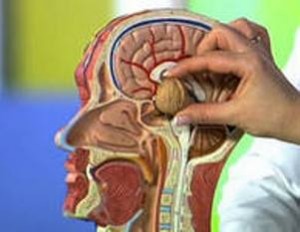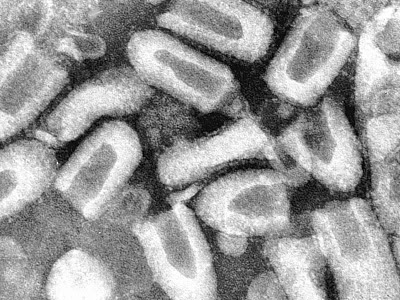interest in the phenomenon "Rabies of the Womb" does not decrease over time. It was known even before our era.
Gradually, the conditions denoted by this term changed, as did the causes of their occurrence, methods of treatment and other points.
Below we consider why this diagnosis is considered obsolete, and how modern doctors see the problem of uterine rabies.
Back in the first century BC, some disorders of female behavior were considered a disease of the female organ - uterus. Due to this, such female disorders are called Hysteria(which means "womb" in Greek) or. As a medical diagnosis Hysteria (Rabies of the uterus) first found in the descriptions of Hippocrates.
 This disease was characterized by demonstrative emotional reactions (tears, laughter, etc.), confusion and increased sexual desire. At the same time, Plato described the Rabies of the uterus as the wandering of a certain beast (that is, the uterus) throughout the body. He explained this by the fact that the uterus, not being able to fertilize, “goes crazy” and, moving through the body (mostly upwards), interferes with breathing, causing suffocation, a state of melancholy and fear.
This disease was characterized by demonstrative emotional reactions (tears, laughter, etc.), confusion and increased sexual desire. At the same time, Plato described the Rabies of the uterus as the wandering of a certain beast (that is, the uterus) throughout the body. He explained this by the fact that the uterus, not being able to fertilize, “goes crazy” and, moving through the body (mostly upwards), interferes with breathing, causing suffocation, a state of melancholy and fear.
At the beginning of our era, the doctor Galen already denied the movement of the uterus through the body, but he supported the phenomenon of uterine rabies, explaining it by the "ardor" of some women, associated with their prolonged abstinence and "stagnant semen."
In the XVIII-early XX centuries, the concept was often used as an official medical diagnosis. According to some reports, about 25% of women suffered from this disease. In many countries, women have been treated for uterine rabies.
For this, water massage and massagers for stationary use (in clinics) were used. Various compresses with incense to the genitals were also used. Since the Middle Ages, it has been proven that the condition of a woman suffering from such an ailment improves after exposure to heat and vaginal massage.
 In the 20th century, compact electric massagers (prototypes of modern vibrators) appeared, which made it possible to alleviate the condition of women at home. In addition, sedatives were prescribed. Young women were advised to get married, widows were prescribed procedures that relieve the state of suffocation and pain in the body (inhalations, laxatives, etc.).
In the 20th century, compact electric massagers (prototypes of modern vibrators) appeared, which made it possible to alleviate the condition of women at home. In addition, sedatives were prescribed. Young women were advised to get married, widows were prescribed procedures that relieve the state of suffocation and pain in the body (inhalations, laxatives, etc.).
Modern vision of the problem of uterine rabies
In our age of diagnosis and "Hysteria"(in terms of uterine rabies) does not exist. They are not fixed either in the International Classification of Diseases (ICD 10) or in the Diagnostic and Statistical Manual. mental disorders. This diagnosis broke up into several more specific ones. However, all of them are associated with a pathological state of the psyche.
The most correct condition, understood as uterine rabies, is usually called Nymphomania. . Nymphomania(literal translation - Crazy Bride) - pathological hypersexuality and excessive sexual desire, as an official diagnosis is enshrined in the ICD-10 in the block of psychological and behavioral disorders.
This suggests that you should not confuse banal promiscuity and promiscuity in sexual relations with a painful condition that requires serious treatment.
To diagnose Nymphomania can only doctor sexopathologist or psychiatrist.
How often is the diagnosis made? Nymphomania? According to statistics, only about 0.05% of women suffer from this disease, that is, it is quite rare. There are no clear criteria for defining Nymphomania.
It can manifest itself in two ways:
Constant desire to have an orgasm. At the same time, very often, during sexual contact, Nymphomaniacs cannot get the desired orgasm ( nymphomaniac frigidity). The lack of the desired result makes women practically exhaust their sexual partner, demanding inhuman endurance from him. Often, not being able to get an orgasm, women resort to perverted forms of sexual intercourse.However, they still feel constant sexual dissatisfaction. This negatively affects both their psychological calmness and the psychological state of the partner, since he understands that he cannot satisfy his woman. This often leads to a breakdown in relationships. A woman suffering from nymphomania, left alone, in most cases falls into severe depression.
 Obsessive desire in the constant change of sexual partners. In this case, a woman strives to have as many sexual relationships as possible with different men. The choice is not based on external qualities, not on any other criteria (intelligence, financial well-being, etc.). The main criterion is the physical ability of a man to have sex. In this case, the woman cannot control her behavior, neglects safety requirements, does not realize "immorality" of his behaviour.
Obsessive desire in the constant change of sexual partners. In this case, a woman strives to have as many sexual relationships as possible with different men. The choice is not based on external qualities, not on any other criteria (intelligence, financial well-being, etc.). The main criterion is the physical ability of a man to have sex. In this case, the woman cannot control her behavior, neglects safety requirements, does not realize "immorality" of his behaviour.
In both cases, the woman suffers from her condition, which manifests itself in periodic tantrums, psychoses, tears, etc. Conditions arising from nymphomania are also dangerous by the loss of criticality to one's behavior. Often this leads to infection with sexually transmitted diseases (since the woman does not think about contraception), and criminal consequences are also possible (rape, beatings, robberies, etc.). The condition is aggravated by the fact that others are condemning the behavior of such a woman, which is fraught with the loss of family, friends, and work.
Since nymphomaniac manifestations are related to psychological disorders, most often they are the result of a more serious psychological problem. It could be schizophrenia manic psychosis or other mental disorder.
Doctors distinguish hypersexuality (promiscuity) caused by an organic brain lesion (eg a tumor) from true nymphomania associated with functional disorders. In some cases, severe stress leads to nymphomania (often rape).
 Also, the cause of nymphomania can be endocrine disorders caused by an ovarian or pituitary tumor.
Also, the cause of nymphomania can be endocrine disorders caused by an ovarian or pituitary tumor.
Endocrine disorders entail hormonal imbalance, which can affect nervous system and lead to the emergence of Nymphomania.
In fairness, we note that endocrine disorders that cause nymphomania are quite rare.
Depending on the cause of Nymphomania, the methods of its treatment will also differ. First of all, it is aimed at eliminating the cause.
Treatment can be divided into two main blocks:
- Medical
- Psychological assistance and behavior correction.
 It is almost impossible to describe the treatment in detail in this article, since both the drugs used and the psychological effects will differ significantly depending on the manifestation of nymphomania, the neglect of the disease and its causes.
It is almost impossible to describe the treatment in detail in this article, since both the drugs used and the psychological effects will differ significantly depending on the manifestation of nymphomania, the neglect of the disease and its causes.
Nymphomania in modern Russia
Society in Russia is not yet ready to accept Nymphomania as a serious disease. It is often confused with promiscuity and negatively related to women suffering from nymphomania. Many "doctors" still indiscriminately make a "diagnosis" of uterine rabies, blaming the woman for her onset.
That is why many women are afraid to report their problem to society, they try to deal with it on their own, they reach despair, which only leads to negative consequences, feelings of guilt and shame. In Europe, for a long time, they have been attentive to this kind of female complaints and take the treatment of nymphomania seriously.
But, despite this, if you feel excessive sexual desire that you cannot control, it is better to overcome the feeling of shame and consult a doctor in time. This will help you avoid a lot of problems in the future.
Rabies Uterus - DEIR School Conference
Nymphomania is a pathological sexual desire in women, manifested in an unbridled desire for sexual intimacy with different partners.
Back in the first century BC, some disorders of female behavior were considered a disease of the female organ - uterus. Due to this, such female disorders are called Hysteria(which means "womb" in Greek) or uterine rabies. As a medical diagnosis Hysteria (Rabies of the uterus) first found in the descriptions of Hippocrates.
This disease was characterized by demonstrative emotional reactions (tears, laughter, etc.), confusion and increased sexual desire. At the same time, Plato described the Rabies of the uterus as the wandering of a certain beast (that is, the uterus) throughout the body. He explained this by the fact that the uterus, not being able to fertilize, “goes crazy” and, moving through the body (mostly upwards), interferes with breathing, causing suffocation, a state of melancholy and fear.
At the beginning of our era, the doctor Galen already denied the movement of the uterus through the body, but he supported the phenomenon of uterine rabies, explaining it by the "ardor" of some women, associated with their prolonged abstinence and "stagnant semen."
What causes uterine hysteria
Hypersexuality can occur for one of the following reasons:
Nymphomania or infection with rabies of the uterus is now called sex addiction. At the same time, the intimate sphere is violated, and obsessive thoughts and actions of a sexual nature appear with a clear subsequent progression: a woman is everywhere pursued by the desire for sexual intimacy with different sexual partners. At the same time, a woman with uterine rabies does not pay attention to the age and appearance of her sexual partner and does not associate sexual contact with achieving orgasm. With nymphomaniac frigidity, sexual contact does not bring satisfaction to a woman. The psycho-emotional level of the patient requires more and more new sexual acts, since with a pronounced obsessive nature of the manifested sexual desire, the sexual organs are not involved in the process of excitation. This speaks of the psychopathology of the patient, and not of psychological hypersexuality with the presence of organic brain lesions. This does not link nymphomania (uterine rabies) with promiscuity due to concomitant oligophrenia, asociality, schizophrenia, etc.
The cause of uterine rabies is hormonal failure, a number of diseases with the use of certain drugs, an existing inferiority complex, self-doubt, ovarian or pituitary tumors, and even pregnancy.
Symptoms of sexual addiction (uterine rabies) are:
- Unstable psyche and pronounced emotional obsession.
- Low level of moral values.
- Regular, uncontrolled sexual impulses that come on suddenly. A woman cannot extinguish them by an effort of will and reason.
- Signs of "withdrawal" after the most short-term abstinence.
- Tendency to casual sex with unfamiliar men.
- Inability to communicate for a long time and enter into sexual contact with one partner.
Women with uterine rabies see men as the object of their sexual gratification. Her thoughts are directed only to sex, but long-term relationships and marriage, and even simple normal communication with the opposite sex, do not work. Sexaholism can arise for serious reasons related to childhood rape, a bad first sexual experience, parental priorities and inappropriate sexual behavior.
With a lack of time and money to find a sexual object, nymphomaniacs (sexaholics) turn to pornography, porn sites, and sexual “toys” for masturbation. When creating a "teenage model of behavior": lies, aggression and irritability, sexual relations, if any, are reduced to zero. Women with uterine rabies have only capricious selfishness in character, they do not know true love.
What are the causes of nymphomania?
Until today, it is not clear why not all women with exactly the same pathologies suffer from nymphomania. However, certain conditions have been identified that can lead to nymphomania. And, on the contrary, it is nymphomania that can become one of the first manifestations of a particular disease.
Likbez
The diagnosis of "uterine rabies" appeared in the time of Hippocrates. It was believed that there was a disease of hysteria (from other Greek hystera - "womb"), the cause of which is that the uterus, wandering around the body, touches various organs and causes pain in them. The essence of the treatment of patients with hysteria in those days was as follows: the uterus was ringed to keep it in one place. That is, they treated her like a crazy person. And then fumigated with soothing herbs.
In the Middle Ages, attacks of nymphomania were evidence that a woman was a witch and cohabited with the devil. Such people were declared demoniac, tried by the Inquisition and burned at the stake. That is, a woman of dissolute behavior was perceived as mad.
Many representatives of the weaker sex simply do not have the courage to admit to the doctor, that they have uterine rabies (a photo and description of nymphomania are presented in the article). The bottom line is that not everyone feels the line between the natural regular need for sex and hypersexuality. Many people know what rabies means, following the example of animals. Even men have a disease similar to nymphomania. Uncontrolled sexuality in the stronger sex is called satyriasis.
when the old woman left in the compartment, fasten up,
please, otherwise you will lose the syringe.
Worst of all is the elderly nymphomaniacs. Even if there is a husband, due to his age he is simply not able to satisfy the increased needs of his wife. And what about those who do not have a husband. The older a woman is, the more difficult it is for her to find a temperamental lover, both because of her age and because of her loss of attractiveness.
It is rare that a 50 and especially a 60-year-old lady manages to persuade a young gentleman to have sex. Wealthy nymphomaniacs go to extreme measures and call boys on call, finding them from ads in newspapers and on websites. And only sane people rush to the doctor.
THE SECRET OF ATTRACTION OF NYMPHO
According to statistics, every third man dreams of meeting a woman with unbridled sexual desire. They are attracted to "explosive" persons, firstly, by a secret desire to realize the most daring sexual fantasies without the risk of being rejected. Secondly, the opportunity to enjoy sex at the very "I can not." Thirdly, the absence of the usual female requirements on the part of these amazing creatures, such as attractive appearance, money and cleanliness of the body. After all, the main thing for nymphomaniacs is the presence of a penis. Despite all of the above, few men are able to withstand such intensity of passions.
In the people you can sometimes hear the expression "rabies of the uterus." The name certainly sounds terrible. What is it? In this article, we invite you to find out the scientific definition of this phenomenon, as well as read interesting facts related to it.
The symptoms of uterine rabies are hard to miss. A woman cannot concentrate on anything except her strong desire, she is haunted by continuous erotic fantasies.
Another name for this condition is uterine hysteria, but it is almost never used in medicine. Pathological nymphomania, or in the common people, rabies of the uterus, is a constant sexual preoccupation, dissatisfaction, arousal. Moreover, this is not just an increased sexual desire, but a huge problem. There are cases when, due to excruciating sexual tension, women took their own lives.
What causes uterine hysteria
Hypersexuality can occur for one of the following reasons:
- Violation of endocrine function;
- Nervous disorders;
- mental illness;
- Hormonal imbalance;
- Reaction to pharmacological drugs;
- Tumor of the ovaries, pituitary gland;
- Low self-esteem.
Symptoms
The signs of uterine rabies are as follows. Women suffering from it:
- Constantly experience strong sexual tension;
- Indiscriminate in the choice of sexual partners (perhaps the most striking of the symptoms of uterine rabies - a woman in this state allows sexual intercourse with absolutely any person, not paying attention to him appearance, position in society or attitude towards it);
- It is not enough for them to have one permanent partner;
- They do not enjoy sex, which brings only short-term relief from their suffering.
Sometimes, uterine rabies is simply meant as immoral behavior, thus expressing their condemnation of the woman's lifestyle. For example, talking about a girl who often changes partners and leads a wild life. But not always the reason for this is nymphomania.
As for the treatment of uterine rabies, everything is not so simple. However, it is best not to rely on folk recipes and seek help from a specialist. First of all, you need to find out what the nature of the violation is - organic, i.e. any processes in the body (tumor, dysfunction endocrine system), or psychological (low self-esteem, etc.).
For the treatment of uterine rabies to be successful, this disorder must be taken seriously and responsibly. You should not be ashamed of your problem, blame yourself, because this condition is amenable to medication and psychotherapy.
The Greek word for uterus is histera. In ancient times, the philosopher Plato put forward a version that this reproductive organ, like a predatory beast, goes berserk if a woman does not want to continue her race. The consequences of this fantasy are still alive today. So the diagnosis of uterine hysteria is just a play on words. Here's an interesting confusion.
Rabies of the uterus in women is the popular name for the disease, which, in other words, is also called female nymphomania, hypersexuality, or excessive sexual desire. Translated from Greek, this means "the insane passion of the bride." But, in our time, nymphomaniacs are also called such representatives of the fair sex, who lead an immoral lifestyle, often changing sexual partners. What is this disease? How is it manifested? Is treatment required?
Characteristics of the disease
A disease called "uterine rabies" in women in official medicine does not exist. But among the people the disease was known several thousand years ago. In the works of Plato, there are references to the fact that the female reproductive organ is like a wild beast that becomes enraged if a woman does not want to think that she should continue the race.
Possessing hypersexuality, a woman becomes the dream of any man. For a woman, another sexual partner is another adventure that helps her at least a little to appease her whim.
The name "nymphomania" also appeared for a reason. According to legend, the nymphs - the inhabitants of the forest, hunted men, luring them into its very thicket, where they used them for love orgies. When the man came to, he could no longer think of anything else but the nymphs. Men left their families and, like madmen, returned to the forest in order to at least once again experience sexual satisfaction in the arms of the beautiful inhabitants of the forest. Whether this is true or myth, no one knows for sure.
In reality, women suffering from uterine rabies cannot control their sexual desires. A woman strives to have as many sexual partners as possible, and it absolutely does not matter: what gender, age he will be, and whether his appearance is beautiful or not. This is where frequency matters. As a rule, during sexual intercourse, a nymphomaniac does not achieve sexual discharge (orgasm), so they do not get any pleasure from the act. Women whose uterus has a disease want sex not so much from what they experience from excitement, but from the obsessive thought of having crazy sex, in other words, the disease is more of a psychological nature.
If we talk about the impact of the disease on the personal life of a woman, then it is negative. Immediately after sex, even if there was an orgasm, the woman is already ready for the next sexual intercourse. Conventionally, uterine rabies in women can be divided into two categories: for some, it is important to get relaxation from sex, for others, orgasm is not important, but the number of sexual acts is very important.
Why does uterine rabies appear in women?
The following factors lead to the main reasons for the appearance of hypersexuality:
- hormonal disorders in the female body;
- uncontrolled intake of hormonal drugs;
- endocrine diseases;
- diseases of a psychological nature;
- a tumor in the ovaries or in the pituitary gland;
- presence of complexes.
The cause of the development of nymphomania may be psychological disorders such as schizophrenia. In some cases, the cause of the development of nymphomania may be rape or rigidity of parents in childhood.
If a woman feels a strong sexual desire, regardless of whether the object of desire is a man or a woman, this should be a signal to immediately contact a doctor and start treatment.
Symptoms of the disease
The main symptom that can signal the disease "uterine rabies" can be a constant sexual desire, when it is impossible to concentrate on anything else. In this state, a woman is looking for new sexual sensations and new partners. The appearance of the disease can also be indicated by the appearance of erotic fantasies. If a woman can have sex up to 15 times a day, while she does not experience sexual satisfaction, then this is nymphomania or uterine rabies in women.

Traditional Treatments
Official medicine today can offer therapeutic measures that help determine the factors that cause nymphomania, as well as eliminate the symptoms of the disease. Before prescribing a course of treatment, it is very important to undergo a diagnosis in order to understand what exactly provoked the development of the disease. To exclude the presence of a tumor, a tomogram of the brain is needed. To determine if a violation hormonal background, you need to take tests for hormones, as well as examine the glands. It is also important to be examined by a gynecologist and tested for infections that can be sexually transmitted. With nymphomania, the treatment is complex, selected individually in each individual case.
The appointment of hormone-containing drugs is justified only if malfunctions in the functioning of the endocrine system are diagnosed.
In the presence of sexually transmitted diseases, they must be treated immediately. Only this will help improve immunity and metabolic processes in the body, which will reduce obsessive sexual desire, relieve nervous excitement and improve the general well-being of a woman. To improve the mental state, sedatives, tranquilizers, neuroleptics are prescribed. You will definitely have to visit a psychologist, which will help to correct the behavior.

Folk remedies in treatment
In folk medicine, there are many recipes that can regulate sexual disorders, in particular, reduce increased sexual excitability and eliminate inflammation of the genital organs. As a rule, folk recipes provide for a course of treatment lasting up to 1.5 months with a break of two weeks. But, any folk remedy it is better to coordinate with your doctor to avoid possible negative reactions of the body.
Here are some folk remedies:
Willow earrings (1 tablespoon) pour 500 ml of boiling water. Insist for an hour, then strain. Drink before meals 1 tbsp. 3 times during the day.
Hop cones, peppermint and melima leaves, meadowsweet flowers, 1 hour bed should be put in a container and pour 500 ml of beer. Infuse for 12 hours, stirring occasionally, then strain. Take 3 times a day for ½ tbsp. The course of treatment is 7 days.
It is also important that nutrition is correct. Avoid various aphrodisiacs as much as possible, such as nuts, chocolate, cheeses, seafood. Favorably affect the state of various soothing decoctions and mood.
If uterine rabies in women does not go away and the woman cannot overcome the obsessive sexual desire, you should immediately contact a sex therapist to select another treatment option. In any case, consultation with a specialist is very important for the normalization of the mental state.
Rabies of the uterus is considered a fairly rare disease. But in professional medicine, this term does not exist, because specialists call such a state of the psyche and physiology of a woman nymphomania.
But no matter how the disease is called, the nature of the disease does not change from this. Frigidity and hypersexuality are considered serious deviations in women. Scientists of antiquity were still engaged in the search for the causes of ailments. The term "womb rabies" was introduced by Plato, who saw the root cause of the disease in the fact that a woman cannot become a mother. Modern medicine denies this version, but the phrase "mad uterus" has remained in use, as well as serious problems for the fair sex, who are faced with an illness.
What happens to the nymphomaniac?
Plato gave nymphomania a mythical explanation. At that time, people recognized the existence of forest spirits - nymphs, beautiful women, before whose beauty and sexuality no man can resist. The Greeks believed that by luring men into the forest, women forced them to have sex with them an infinite number of times, until the stronger sex died from exhaustion. Reading this description of the disease, modern man just shrugged skeptically. But already in ancient times, people began to look for ways to treat unbridled sexual desire, when sexual acts repeating one after another do not bring satisfaction to a woman.

Many of the fair sex will not have the courage, despite their sexual emancipation, to tell the doctor: "I have uterine rabies." This is also due to the fact that not everyone understands the line between a regular natural need for sex and hypersexuality. Many people know what rabies is and cite as an example animals that, being in an overexcited state, can harm a person and, having bitten him, infect him with an illness. Men also have a disease similar to nymphomania. Their uncontrolled sexuality is usually called satyriasis. It is easy to imagine what a rabid, uncontrollable rage is. If people suffering from both diseases are not given the opportunity to satisfy their needs, then hypersexuality can completely disable their control over their own behavior.
Nymphomania is not an infectious disease, but a woman suffering from it, due to her promiscuity, becomes a carrier of various infections. Modern medicine classifies uterine rabies as mental illness. There are options when an ailment or predisposition to it, according to scientists, is inherited. Hysteria is another definition of a disease category that has nothing to do with increased libido. The fair sex, suffering from nymphomania, is aimed at obtaining sexual pleasure and, in search of a new partner, agree to engage in promiscuity with anyone in order to obtain satisfaction.
If a woman has symptoms of this disease, neither the excessively young or old age of a potential partner, nor the fact that he suffers from AIDS or drug addiction will stop her from sexual intercourse. Of course, she will not care about any protection. Rabies is not an obstacle to orgasm, but the nymphomaniac cannot receive satisfaction from the latter. Hysteria and the desire to get satisfaction from sexual intercourse can drive her to the social bottom. But at the same time, a woman will not consider herself unhappy, since rabies will reduce all her life priorities to constant sexual intercourse.
What are the root causes of nymphomania?
Psychologists and psychiatrists believe that the main reason for uterine rabies is low self-esteem. This disease most often affects the fair sex, who have mental disorders. Causes of uterine hysteria can be:
- Disorders of the nervous system;
- Violations of the endocrine system;
- Hormonal imbalance;
- Reactions to the use of drugs;
- Decreased self-esteem;
- pituitary or ovarian tumors;
- Mental diseases.
The causes of uterine disease can be hidden in hormonal imbalance. Endocrine disorders can cause the onset of uterine rabies, which explains why the disease occurs and progresses in women during pregnancy. Hormonal and endocrine changes are taking place in the body of the woman in labor, which can become a suitable soil for uterine rabies. The cause of the disease can be ovarian tumors. Brain tumors often cause such rabies.
From this video you can learn everything about such a disease as nymphomania:
Women who have abortions are also at risk. Colds affect the functioning of the ovaries. If their treatment is not started in a timely manner, they can provoke a disease of the uterus. What is contamination from unclean surgical instruments? This is the risk of the emergence and development of a variety of infectious diseases. Such rabies of the uterus is quite rare today, but it is possible in those hospitals where sanitary standards are not strictly observed. If a woman has symptoms of hormonal disruptions and develops hysteria against their background, the risk of rabies increases significantly.
The fight against the disease begins after its causes are established. For their exact establishment, the patient needs to be examined by a psychiatrist, oncologist, sexologist, endocrinologist. Symptoms of uterine disease can be closely intertwined with various mental disorders, which in some cases makes it difficult to diagnose. On fig. 1, 2 you can see signs of uncontrolled sexuality in nymphomaniacs. It is believed that this disease can be prevented by taking preventive measures to detect hypersexuality in a timely manner, and effectively providing such patients with medical care at initial stage the development of the disease.

Signs of uncontrolled sexuality in women
You can't do without antibiotics!
As soon as medical specialists determine the symptoms and diagnose the disease, the first thing that is prescribed to patients is antibiotics. The disease causes inflammation of the uterus, and not in all cases, the inflammatory process can be quickly stopped. Treatment of the disease includes douching. Not the last place in this process is played by physiotherapy. What is the psychological support of a pregnant woman, many understand, knowing that at this time the psyche of the fair sex is characterized by increased vulnerability. But the treatment of problems with the uterus also requires an attentive, careful attitude towards a woman, whose culture is practically absent in Russia.
In foreign clinics, there are special psychological support programs for patients who treat the uterus for rabies, cancer and other diseases, but for domestic medicine they are perceived as fantastic. What can a woman really do in Russia if she is overtaken by such a phenomenon as uterine hysteria? To receive qualified medical assistance, a woman will have to contact a specialized medical treatment facility. In this case, it is necessary to undergo an examination for the presence of infectious diseases after promiscuity, since this disease often leaves such an inheritance in the body. Traditional medicine also has effective treatment experience, using tannin, St.



